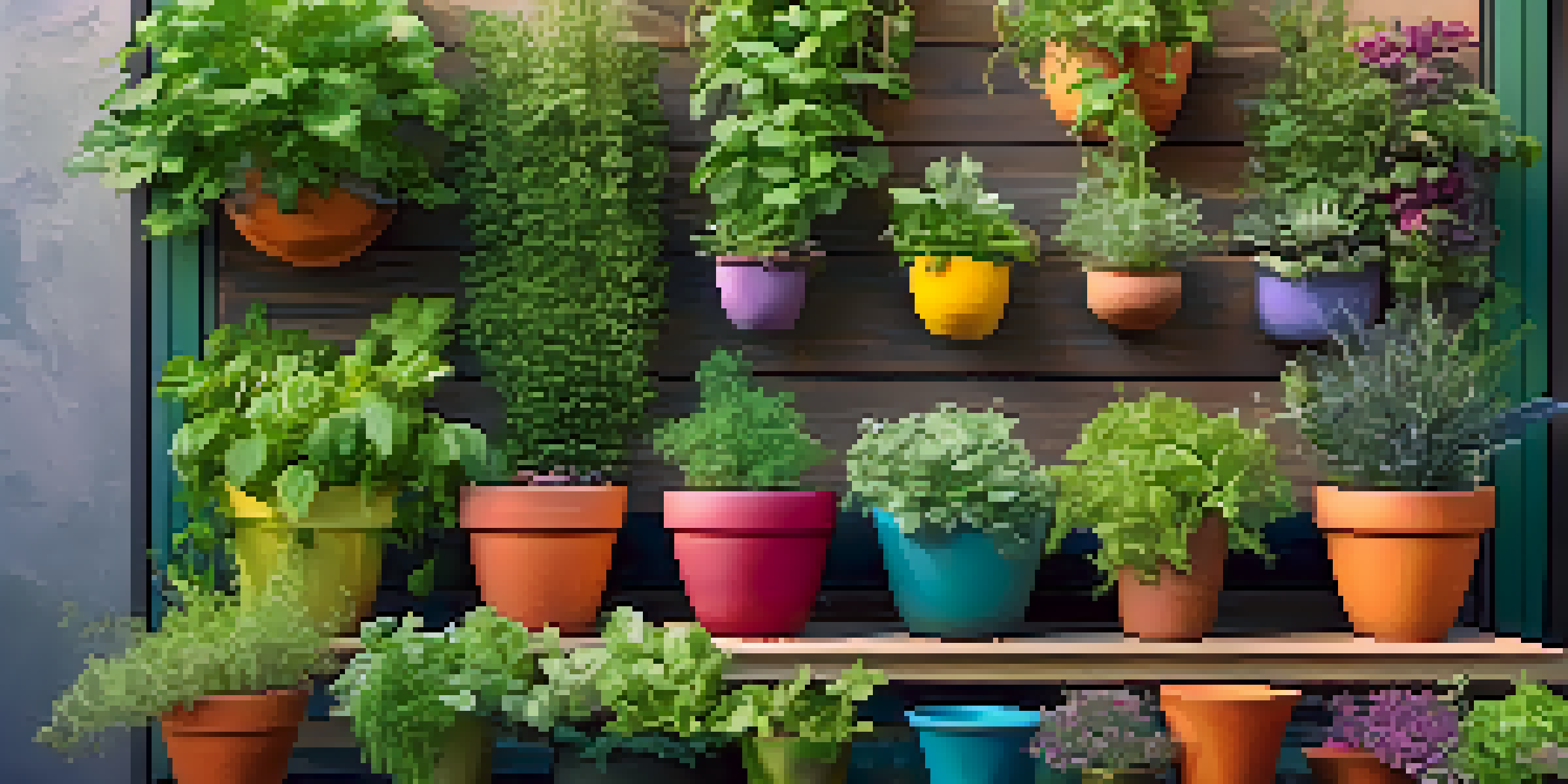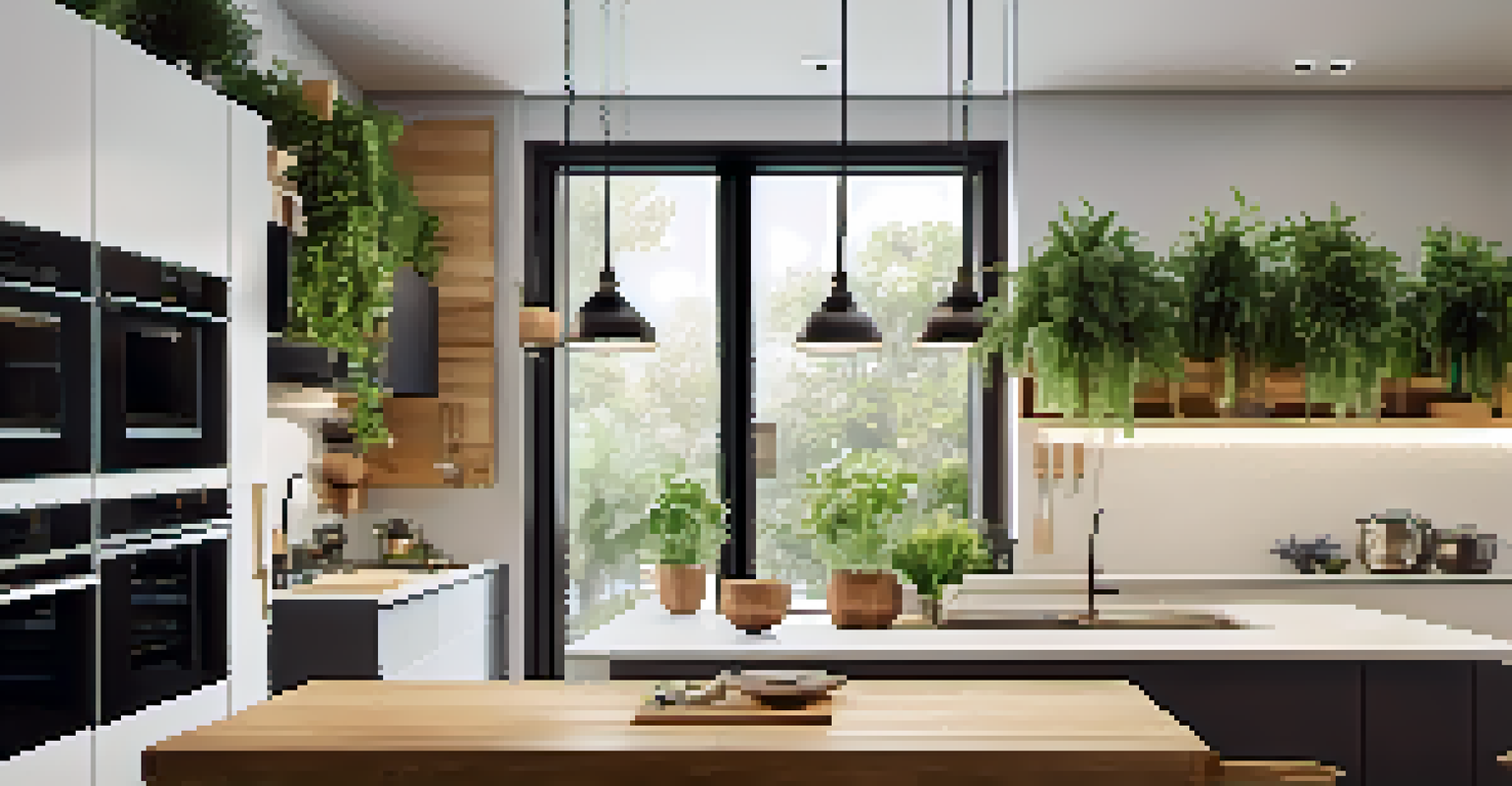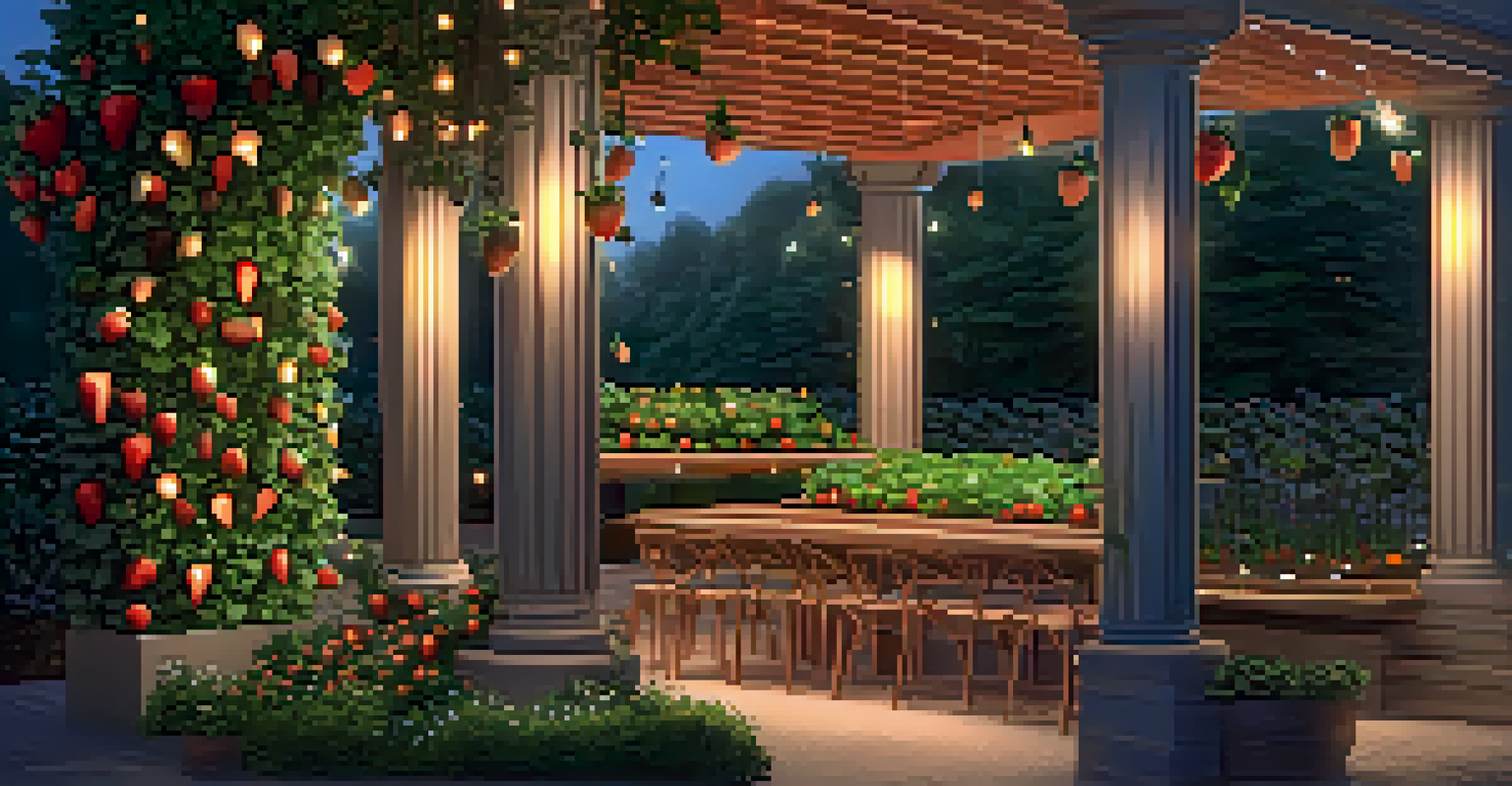Designing Vertical Gardens with Edible Plants for Small Spaces

Understanding the Benefits of Vertical Gardens
Vertical gardens are a fantastic solution for those with limited space. They allow you to grow plants upwards instead of outwards, maximizing your gardening potential. Plus, they can enhance your outdoor aesthetics while providing fresh produce right at your fingertips.
Gardening is not a job; it’s a joy, a passion, and a way to connect with nature.
By incorporating edible plants into your vertical garden, you're not only beautifying your space but also creating a sustainable food source. Imagine stepping outside and picking fresh herbs or vegetables for your next meal. It’s a delightful way to connect with nature while enjoying homegrown goodness.
Additionally, vertical gardens can help improve air quality and reduce noise, making them a perfect choice for urban living. They offer a green oasis that can transform any small area into a serene escape, all while contributing to your culinary adventures.
Choosing the Right Edible Plants for Your Space
When selecting plants for your vertical garden, consider their growth habits and space requirements. Herbs like basil, mint, and parsley are great choices as they thrive in smaller pots and can be harvested continuously. Leafy greens such as spinach and lettuce also adapt well to vertical setups.

Fruiting plants like strawberries and dwarf varieties of tomatoes can add a vibrant splash of color and flavor. They not only look beautiful cascading down your garden but also provide delicious snacks. Make sure to select varieties that are suitable for your climate and the amount of sunlight your space receives.
Maximize Space with Vertical Gardens
Vertical gardens allow you to grow plants upwards, making them ideal for small spaces while enhancing aesthetics and providing fresh produce.
Don’t forget about vertical planters that allow for easy access to your plants. Some options even come with built-in watering systems, making maintenance a breeze. Choosing the right plants with the right containers will ensure your vertical garden thrives.
Exploring Vertical Gardening Techniques and Structures
There are several techniques you can use to create a stunning vertical garden. One popular method is using wall-mounted planters, which can be as simple as repurposing old pallets or using specialized vertical garden kits. These structures allow you to showcase your plants while saving precious floor space.
To plant a garden is to believe in tomorrow.
Another option is to use trellises or grids that support climbing plants, such as peas or cucumbers. These vertical structures not only create a beautiful display but also help manage plant growth efficiently. You’ll find that the right support can make a world of difference in a compact garden.
Lastly, consider vertical garden towers, which are self-contained units that stack plants in a small footprint. They are perfect for apartment balconies or patios, offering a compact solution for growing a variety of plants. Each method brings its own charm and functionality to your edible garden.
Essential Care for Your Vertical Garden Plants
Taking care of your vertical garden involves regular watering, especially since the plants are in a confined space. Check the moisture levels frequently, as vertical setups can dry out faster than traditional gardens. Consider using drip irrigation systems to ensure consistent hydration.
Fertilizing your plants is also crucial for promoting healthy growth. Use organic fertilizers that can provide the necessary nutrients without harming the environment. The goal is to create a thriving ecosystem that supports both plant health and edible yield.
Choose Edible Plants Wisely
Selecting the right edible plants, like herbs and dwarf vegetables, ensures your vertical garden thrives and provides delicious homegrown options.
Lastly, keep an eye out for pests and diseases. Regularly inspect your plants and remove any affected leaves promptly. A proactive approach will help you maintain a healthy vertical garden that produces delicious, fresh food.
Designing Aesthetic and Functional Vertical Gardens
Designing your vertical garden should be both an art and a science. Consider arranging plants by height, color, and texture to create a visually pleasing display. Mixing different types of plants can add interest and make your garden a focal point in your space.
Incorporating decorative elements like colorful pots or trellises can enhance the beauty of your garden. You can even add lighting to illuminate your vertical garden during the evening, transforming it into a magical space. Remember, the goal is to create a garden that you enjoy looking at and interacting with.
Functionality is just as important as aesthetics. Ensure that your garden design allows for easy access to plants for harvesting and maintenance. A well-planned vertical garden should be a joy to work with and a pleasure to behold.
Incorporating Vertical Gardens into Your Home Decor
Vertical gardens can seamlessly integrate into your home decor, bringing a touch of nature indoors. You can place them in kitchens, living rooms, or even bathrooms, where fresh herbs can be conveniently accessed for cooking. It’s a clever way to enhance your interior while promoting a healthy lifestyle.
Consider using hanging planters or wall-mounted systems to create a living wall. This not only maximizes space but also adds a unique design element to your home. Imagine a vibrant wall of green that not only looks stunning but also provides you with fresh ingredients.
Sustainable Practices for Longevity
Practicing sustainability through composting and companion planting helps maintain soil health and supports the long-term success of your vertical garden.
Additionally, using decorative pots and planters that match your home’s aesthetic can create a cohesive design. The key is to choose plants that thrive indoors while complementing your decor style, so you can enjoy a beautiful and functional space.
Sustaining Your Vertical Garden for Long-Term Success
To ensure the long-term success of your vertical garden, it’s important to practice sustainability. Consider composting kitchen scraps to create nutrient-rich soil for your plants. This not only reduces waste but also promotes healthier plants, ultimately enhancing your garden’s productivity.
You can also explore companion planting, which involves growing different plants together that benefit each other. For example, planting basil alongside tomatoes can enhance their flavor and deter pests. This method supports a balanced ecosystem within your vertical garden.

Regularly rotating your crops will also help maintain soil health and prevent disease buildup. By following these sustainable practices, your vertical garden can thrive for years, providing you with fresh produce and a beautiful space to enjoy.